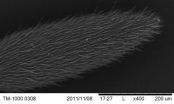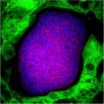(Press-News.org) NEW YORK (September 10, 2012) -- An off-patent anti-inflammatory drug that costs around two cents for a daily dose in developing countries has been found by researchers at Weill Cornell Medical College to kill both replicating and non-replicating drug resistant tuberculosis in the laboratory -- a feat few currently approved TB drugs can do, and resistance to those is spreading.
Their findings, published online by the journal PNAS, point to a potential new therapy for the more than 500,000 people worldwide whose TB has become resistant to standard drug treatments. But the researchers worry that the effective drug, oxyphenbutazone, may never be tested in TB clinical trials.
Weill Cornell's Dr. Carl Nathan and his research team found what they call the "completely surprising" ability of oxyphenbutazone to kill drug resistant TB after testing thousands of approved drugs against the bacteria. This repurposing of agents already on the market can lead to quicker testing for new uses.
"This agent might help save lives if there was a way to test it in TB patients," says Dr. Nathan. Oxyphenbutazone went on the market as a patented drug for arthritis-like pain in the early 1950s, and lost its patent and market dominance by the 1970s.
"It is difficult today to launch clinical studies on a medication that is so outdated in the United States, that it is mainly used here in veterinary medicine to ease pain," says the study's senior author, Dr. Nathan, chairman of the Department of Microbiology and Immunology, the R.A. Rees Pritchett Professor of Microbiology, and the director of The Abby and Howard Milstein Program in the Chemical Biology of Infectious Disease at Weill Cornell. "No drug firm will pay for clinical trials if they don't expect to make a profit on the agent. And that would be the case for an off-patent drug that people can buy over the counter for pain in most of the world."
He adds that oxyphenbutazone, best known under the trademark name of Tandearil, does have some established toxicities, "and is not a drug you should take for aches and pains if a safer alternative is available." But the drug's major toxicities appear to be less frequent than the major side-effects of the drug regimens that are currently used to treat TB, he says.
Treating the TB that Hides
Mycobacterium tuberculosis is unusual among disease-causing bacteria in that it naturally infects just humans. One-third of the world's population is infected with TB, but the bacteria typically remain dormant in a person with a healthy immune system.
Nonetheless, TB becomes active in enough people that it is the leading cause of death in humans from a bacterial infection. It is difficult to treat, and the bacteria can become resistant to therapy. TB treatment in a drug-sensitive patient takes six months, using a combination of agents. If the TB is sensitive to these first-line agents and the therapy is completed with full-strength, non-counterfeit drugs, up to 95 percent of patients can be cured.
However, if a patient's TB becomes resistant to these drugs, second-line agents are administered every day for two years or more. "These second-line drugs are often toxic and expensive, and are not readily available in developing countries, where most of the infections occur," Dr. Nathan says. Mortality in drug resistant TB patients can be as high as 80 percent.
A major issue in treating TB is that the bacteria can "hide out" in the body in a non-replicating form, even when a TB patient is undergoing treatment.
To find agents that could attack non-replicating TB, Dr. Nathan's research team first identified four conditions that keep bacteria in that state within the human body: low oxygen, mild acidity, a fat instead of sugar to eat and a small amount of the natural defense molecule nitric oxide.
The research team replicated those conditions in the test tube and then methodically tested the effectiveness of thousands of agents against the bacteria. After testing 5,600 drugs, researchers found oxyphenbutazone.
Researchers then delved into the mechanism by which oxyphenbutazone kills TB and found that the conditions that allow the bacterium to remain dormant modify the drug to the point that it starts reacting against both non-replicating and replicating TB. "When this happens, TB can't defend itself and dies," Dr. Nathan says.
But the researchers were unable to test oxyphenbutazone in mice, because the animals metabolize the drug to an inactive form far faster than humans.
"This makes testing the drug for TB use in humans problematic since the FDA requires preclinical animal testing studies for safety and efficacy," Dr. Nathan says. "Yet there is a long track record of oxyphenbutazone's relatively safe use in hundreds of thousands of people over decades."
Dr. Nathan and his team are continuing their research, testing hundreds of thousands of compounds for their action against TB. His team has already found another approved drug, nitazoxanide, to be effective against the bacteria, publishing his findings in 2009.
Nitazoxanide, a drug with an excellent safety record, is still on patent for use against some infections caused by other microbes. Discussions have been held about testing it in TB, Dr. Nathan says, but have stalled because of the same problem as oxyphenbutazone. The drug is metabolized so quickly in mice that it cannot be tested against experimental TB in that species.
For both oxyphenbutazone and nitazoxanide, Dr. Nathan argues that the requirement for testing in animals with experimental TB should be waived, because these agents work against TB in the test tube, have already been used with relative safety in people and might address an urgent need for treatment of a contagious disease with high mortality and few other treatment options.
###
This research was supported by the Tuberculosis Drug Accelerator Program of the Bill and Melinda Gates Foundation and the Abby and Howard P. Milstein Program in Chemical Biology of Infectious Disease.
Co-authors of the study include: Dr. Ben Gold, Dr. Maneesh Pingle, Julia Roberts, Dr. Mark Rundell, Dr. Thulasi Warrier, Dr. Aditya Venugopal, Dr. Crystal Darby, Xiuju Jiang, Dr. J. David Warren, Amy Cunningham-Bussel, Poonam Rath, Tamutenda Chidawanyika, Dr. Selin Somersan and Dr. W. Clay Bracken from Weill Cornell; Dr. Steven J. Brickner of S. J. Brickner Consulting; Dr. Ouathek Ouerfelli and Dr. Nilesh Shah from Memorial Sloan–Kettering Cancer Center; Dr. Eric L. Nuermberger from Johns Hopkins Hospital; and Dr. Joseph Fernandez, Ronald Realubit, Dr. J. Fraser Glickman, and Dr. Haiteng Deng from The Rockefeller University.
Weill Cornell Medical College
Weill Cornell Medical College, Cornell University's medical school located in New York City, is committed to excellence in research, teaching, patient care and the advancement of the art and science of medicine, locally, nationally and globally. Physicians and scientists of Weill Cornell Medical College are engaged in cutting-edge research from bench to bedside, aimed at unlocking mysteries of the human body in health and sickness and toward developing new treatments and prevention strategies. In its commitment to global health and education, Weill Cornell has a strong presence in places such as Qatar, Tanzania, Haiti, Brazil, Austria and Turkey. Through the historic Weill Cornell Medical College in Qatar, the Medical College is the first in the U.S. to offer its M.D. degree overseas. Weill Cornell is the birthplace of many medical advances -- including the development of the Pap test for cervical cancer, the synthesis of penicillin, the first successful embryo-biopsy pregnancy and birth in the U.S., the first clinical trial of gene therapy for Parkinson's disease, and most recently, the world's first successful use of deep brain stimulation to treat a minimally conscious brain-injured patient. Weill Cornell Medical College is affiliated with NewYork-Presbyterian Hospital, where its faculty provides comprehensive patient care at NewYork-Presbyterian Hospital/Weill Cornell Medical Center. The Medical College is also affiliated with the Methodist Hospital in Houston. For more information, visit weill.cornell.edu.
Pain drug can kill resistant tuberculosis
Researchers find low cost drug wipes out drug resistant TB, but worry it may not reach patients in need
2012-09-11
ELSE PRESS RELEASES FROM THIS DATE:
Rhode Island Hospital study shows wine has more cardiovascular benefits than vodka
2012-09-11
PROVIDENCE, R.I. – The next time you call someone a drunken pig, remember this study. Rhode Island Hospital researcher Frank Sellke, M.D., chief of cardiothoracic surgery at Rhode Island and The Miriam hospitals, and his colleagues studied the effects of red wine and vodka on pigs with high cholesterol and found that the pigs with a penchant for pinot noir fared better than their vodka swilling swine counterparts. The paper is published in the September issue of the journal Circulation.
"There has been previous research touting the benefits of moderate consumption of ...
Ants have an exceptionally 'hi-def' sense of smell
2012-09-11
Ants have four to five times more odor receptors than most other insects, a team of researchers have discovered.
The research team, led by Lawrence Zwiebel at Vanderbilt, recently completed the first full map of olfactory system that provides ants with their sense of taste and smell. They found the industrious insects have genes that make about 400 distinct odorant receptors, special proteins that detect different odors. By comparison, silk moths have 52, fruit flies have 61, mosquitoes range from 74 to 158 and honeybees have 174.
"The most exciting moment for me was ...
Researchers find 2 gene mutations drive adrenal cancer
2012-09-11
This press release is available in Portuguese.
ANN ARBOR, Mich. — Two different genetic mutations cooperate to induce adrenal cancer, according to a new study from researchers at the University of Michigan Comprehensive Cancer Center and University of Sao Paulo in Brazil.
The finding provides new clues to this rare and deadly cancer type, and researchers hope it will lead to better treatments by targeting both mutations.
About 600 Americans are diagnosed with adrenal cancer per year. It is typically diagnosed in late stages when there is nearly no chance of survival ...
CWRU nurse researchers find effort takes its toll on unpaid family caregivers
2012-09-11
According to AARP, the annual cost of unpaid elder caregiving – work that falls mainly on the backs of family members – runs about $450 billion.
While some companies document the physical and emotional toll that the workplace takes on their employees, exactly how draining caregiving might be has never really been measured.
So Case Western Reserve University nurse researchers studied it.
"Without knowing the impact of effort, we have two vulnerable people at risk for health issues—the caregiver and the care receiver," said Evanne Juratovac, assistant professor at ...
'Civilian cyber-warriors' not driven by patriotism
2012-09-11
EAST LANSING, Mich. -- People who commit cyber-attacks against the government also tend to download music illegally and participate in physical protests. Surprisingly, however, they don't appear to be acting out of some sense of national pride or patriotism.
Those are some of the findings to emerge from a Michigan State University study that for the first time begins to paint a profile of "civilian cyber-warriors," or people who engage in attacks against domestic or foreign governments. Cybercrimes pose a huge societal risk and have become a hot issue globally, yet little ...
Study ties forest 'greenness' in western US to snowpack extent
2012-09-11
Results of a new study tie forest "greenness" in the western United States to fluctuating year-to-year snowpack extent.
The results show that mid-elevation mountain ecosystems are the most sensitive to rising temperatures and to changes in precipitation and snowmelt.
University of Colorado-Boulder scientist Noah Molotch and colleagues used satellite images and ground measurements to identify the threshold at which mid-level forests sustained by moisture change to higher-elevation forests sustained by sunlight.
A paper reporting the results was published yesterday ...
NASA catches Tropical Storm Leslie and Hurricane Michael in the Atlantic
2012-09-11
Satellite images from two NASA satellites were combined to create a full picture of Tropical Storm Leslie and Hurricane Michael spinning in the Atlantic Ocean. Imagery from NASA's Aqua and Terra satellites showed Leslie now past Bermuda and Michael in the north central Atlantic, and Leslie is much larger than the smaller, more powerful Michael.
Images of each storm were taken by the Moderate Resolution Imaging Spectroradiometer, or MODIS instrument that flies onboard both the Aqua and Terra satellites. Both satellites captured images of both storms on Sept. 7 and Sept. ...
'Humanized' mice developed at OHSU enable malaria research breakthrough at Seattle BioMed
2012-09-11
PORTLAND, Ore. — A novel human liver-chimeric mouse model developed at Oregon Health & Science University and Yecuris Corporation has made possible a research breakthrough at Seattle Biomedical Research Institute that will greatly accelerate studies of the most lethal forms of human malaria.
The study findings are published online in the Journal of Clinical Investigation. Study photos were selected to appear in "Scientific Show Stoppers" on the JCI blog.
Plasmodium falciparum, one of two human-specific malaria parasites, is a global health crisis, causing more than ...
Mushroom-derived compound lengthens survival in dogs with cancer, Penn Vet study finds
2012-09-11
PHILADELPHIA — Dogs with hemangiosarcoma that were treated with a compound derived from the Coriolus versicolor mushroom had the longest survival times ever reported for dogs with the disease. These promising findings offer hope that the compound may one day offer cancer patients — human and canine alike — a viable alternative or complementary treatment to traditional chemotherapies.
The study was conducted by two University of Pennsylvania School of Veterinary Medicine faculty. Dorothy Cimino Brown is professor and chair of the Department of Clinical Studies and director ...
Psychopathic boldness tied to US presidential success
2012-09-11
The fearless dominance associated with psychopathy may be an important predictor of U.S. presidential performance, suggests an analysis published this week in the Journal of Personality and Social Psychology.
"Certain psychopathic traits may be like a double-edged sword," says lead author Scott Lilienfeld, a psychologist at Emory University. "Fearless dominance, for example, may contribute to reckless criminality and violence, or to skillful leadership in the face of a crisis."
In fact, fearless dominance, linked to diminished social and physical apprehensiveness, ...
LAST 30 PRESS RELEASES:
Nanoplastics have diet-dependent impacts on digestive system health
Brain neuron death occurs throughout life and increases with age, a natural human protein drug may halt neuron death in Alzheimer’s disease
SPIE and CLP announce the recipients of the 2025 Advanced Photonics Young Innovator Award
Lessons from the Caldor Fire’s Christmas Valley ‘Miracle’
Ant societies rose by trading individual protection for collective power
Research reveals how ancient viral DNA shapes early embryonic development
A molecular gatekeeper that controls protein synthesis
New ‘cloaking device’ concept to shield sensitive tech from magnetic fields
Researchers show impact of mountain building and climate change on alpine biodiversity
Study models the transition from Neanderthals to modern humans in Europe
University of Phoenix College of Doctoral Studies releases white paper on AI-driven skilling to reduce burnout and restore worker autonomy
AIs fail at the game of visual “telephone”
The levers for a sustainable food system
Potential changes in US homelessness by ending federal support for housing first programs
Vulnerability of large language models to prompt injection when providing medical advice
Researchers develop new system for high-energy-density, long-life, multi-electron transfer bromine-based flow batteries
Ending federal support for housing first programs could increase U.S. homelessness by 5% in one year, new JAMA study finds
New research uncovers molecular ‘safety switch’ shielding cancers from immune attack
Bacteria resisting viral infection can still sink carbon to ocean floor
Younger biological age may increase depression risk in older women during COVID-19
Bharat Innovates 2026 National Basecamp Showcases India’s Most Promising Deep-Tech Ventures
Here’s what determines whether your income level rises or falls
SCIE indexation achievement: Celebrate with Space: Science & Technology
Children’s Hospital Colorado performs region’s first pediatric heart and liver dual organ transplant
Australian team discover why quantum computers have memory problems over time
What determines the fate of a T cell?
Candida auris: genetic process revealed which could be treatment target for deadly fungal disease
Groundbreaking discovery turns household plastic recycling into anti-cancer medication
Blocking a key inflammatory pathway improves liver structure and vascular function in cirrhosis, study finds
Continuous spread: Raccoon roundworm detected in nine European countries
[Press-News.org] Pain drug can kill resistant tuberculosisResearchers find low cost drug wipes out drug resistant TB, but worry it may not reach patients in need





